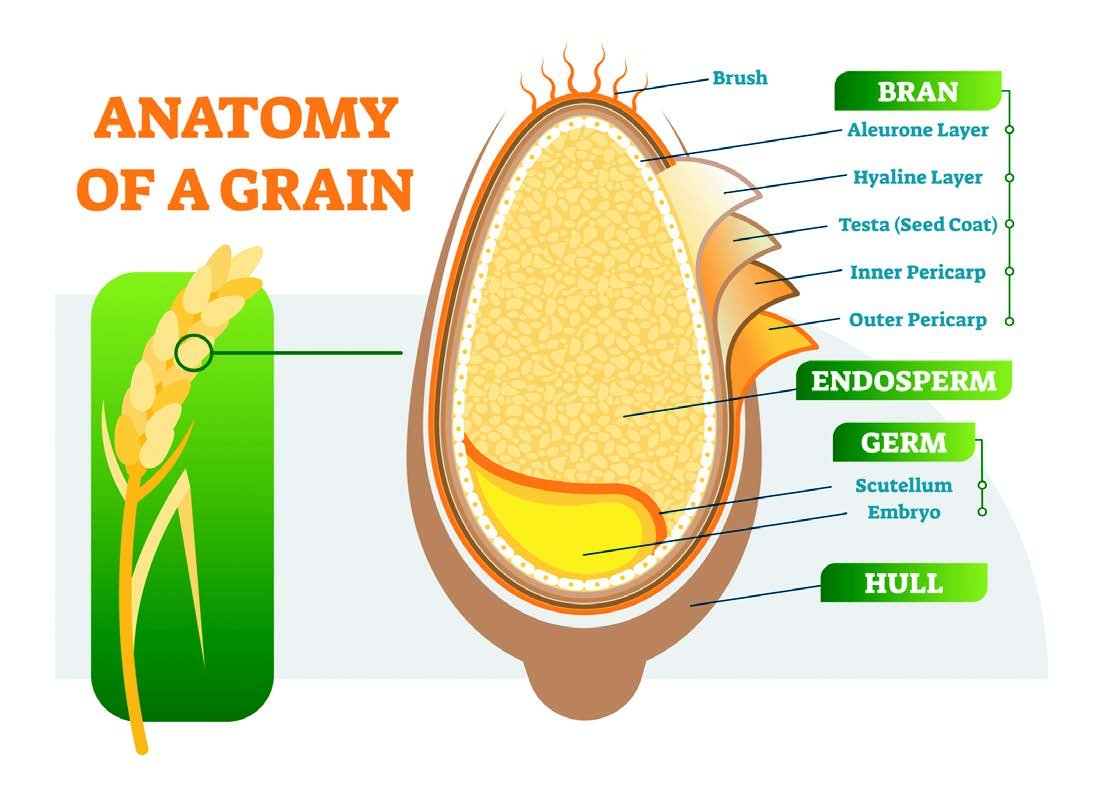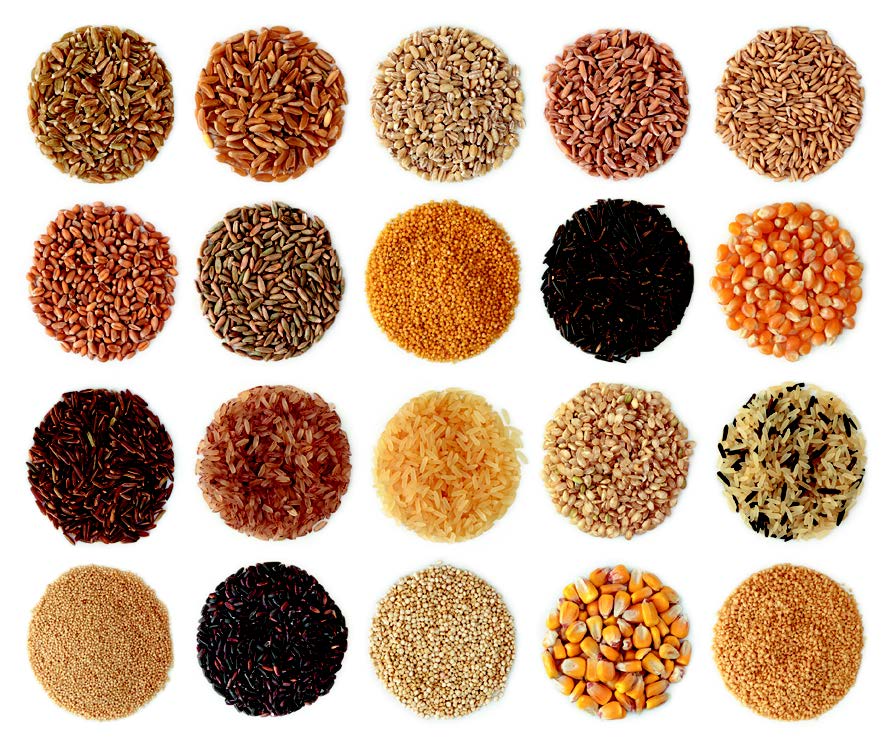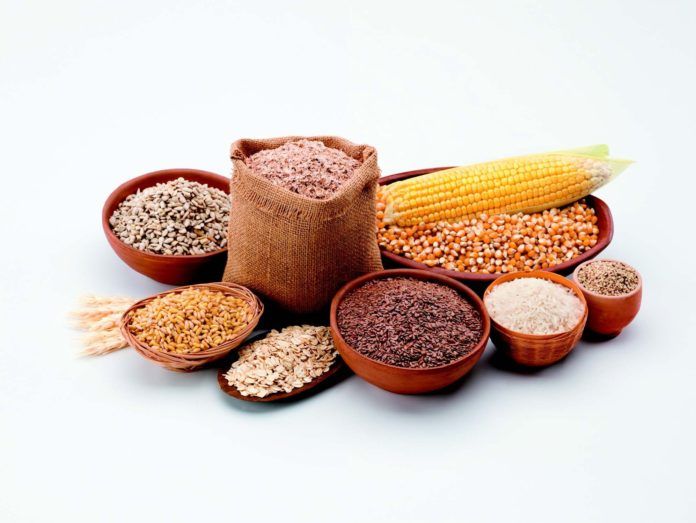The 2015 Dietary Guidelines for Americans recommend replacing refined grains with whole grains so that at least half of all grains consumed are whole grains. This recommendation is echoed in other guidelines and is backed up by many observational studies in which diets high in whole grains are associated with an array of health benefits compared to diets high in refined grains. You may know that whole grains provide fiber that can help reduce constipation, and that whole grains are less likely to spike blood sugar levels than refined grains, but diets rich in whole grains are also associated with healthier microbiomes and lower risk of type 2 diabetes, cardiovascular disease, esophageal and colorectal cancers, diverticular disease, and death from all causes. Tufts researchers and others are uncovering additional benefits associated with whole grain intake.

Eye Health: A research team at Tufts led by Sheldon Rowan, PhD, an assistant professor at Tufts’ Friedman School of Nutrition Science and Policy and a scientist at the Nutrition and Vision Lab at the Jean Mayer USDA Human Nutrition Research Center on Aging (HNRCA), found that a diet of slowly-digested starches prevented development of age-related macular degeneration (AMD) in mice when compared to mice fed rapidly-digested starches. Slowly-digested starches (such as those in intact or minimally processed whole grains as well as legumes, seeds, nonstarchy vegetables, and many other high-fiber foods) raise blood sugar more slowly and are therefore said to have a low glycemic index, or GI. This study suggests that eating a diet rich in whole grains and other low-GI foods could potentially lower risk for AMD. “Since our study was done in mice, we can’t say for sure that whole grains prevent AMD in humans,” says Rowan, “but there is strong observational data indicating that people who adhere to low-GI dietary patterns that include whole grains are at lower risk for AMD, and people who consume a high-GI diet with a lot of rapidly-digested starches (like refined grains) are at higher risk. We are currently designing an interventional study to get stronger data on the impact of a low-GI diet on development and progression of AMD.” A third group of mice in Rowan’s study who were switched halfway through the one-year study period from a high-GI diet to a low-GI diet also showed less signs of AMD, suggesting that improving one’s diet at any point may be beneficial.
Rowan’s study went on to assess why the low-GI diet produced fewer signs of AMD in the mice. They found higher numbers of certain molecules created by gut microbes in the low-GI/low-AMD mice, suggesting that benefits of low-GI diets on the gut microbiome could partly explain its effects. Another interesting finding was an increase in advanced glycation end-products (AGEs) in the mice who went on to develop signs of AMD. “AGEs, which are end products of sugar metabolism, can damage the proteins and lipids that a cell needs to function,” says Rowan. “It is known that damaged proteins accumulate in the retina of the eye, where they contribute to the development of AMD.” Whole grains are less likely to contribute to the development of AGEs than refined grains.
“While there is an important role for genetics in AMD, our research in mice indicates that environmental factors such as diet play an equally important role,” says Rowan. Swapping whole grains for refined may be helpful if AMD runs in your family, and certainly has health benefits beyond AMD.

Weight Management: It has been suggested that whole grains can help prevent weight gain, but not all studies agree. A new clinical trial out of Tufts, led by Friedman School professor and director of the Energy Metabolism Lab at the HNRCA, Susan B. Roberts, PhD, has added an important piece of the puzzle. “Our study took a careful look at the metabolic differences between whole grains and refined grains,” says Roberts. “Previous observational studies suggested that people who eat whole grains tend to be in a healthier weight range. Our study showed for the first time that whole grains really do have an important effect on our metabolism.”
The study provided all foods over four weeks for 81 participants between the ages of 40 and 65. The overall diets of the participants were comparable, except one group was eating around 200 grams of whole grains daily and the other ate only refined grains. (The whole grain eaters consumed 35 to 45 grams of fiber a day, while the refined-grain diet included 18 to 24 grams.) At the end of the study period, the whole grain eaters had a higher resting metabolic rate—about 43 calories a day higher—than the refined grain eaters. “Resting metabolic rate measures the calories the body uses just to stay alive,” says Roberts. “Like the gas used when a car is simply idling, it’s the energy used when we’re at rest to keep the heart beating and the brain working.” The whole grain eaters also lost more calories in their stool. Fiber passes through the digestive tract without being broken down, so the calories in the fiber of whole grains are not fully absorbed, meaning whole grains effectively provide the body with less calories than refined grains. “The combination of the increased metabolic rate and the higher energy excretion added up to almost 100 calories a day,” says Roberts. These findings suggest that eating whole grains, in place of refined grains, may help with long-term weight management.
Replacing Starch: In addition to the intrinsic effects of whole grains, another benefit may come from using them to replace refined grains and starches. “Many people don’t realize that refined starch—the calories in corn flakes, white bread, white rice, and potatoes—is 100 percent glucose,” says Dariush Mozaffarian, MD, DrPH, dean of the Friedman School and editor-in-chief of Tufts Health & Nutrition Letter. “There is about five times more refined starch in the U.S. food supply than added sugar. That’s why I often refer to starch as the ‘hidden sugar,’ as these refined grains and starches are linked to weight gain, type 2 diabetes, and cardiovascular disease.” So, when choosing whole grains (or other minimally processed foods like fruits, veggies, legumes, and nuts), you may double your benefit if you use these to replace refined grains.
Getting Enough: According to government surveys, approximately 40 percent of Americans consume no whole grains at all, and less than three percent of children/adolescents and eight percent of adults consume the recommended minimum three servings a day. A “serving” of whole grains is one ounce (cooked) of 100 percent whole-grain food, two ounces of partly whole-grain products, or whatever amount of a food contains 16 grams of whole-grain ingredients (this information is sometimes listed on food packages). “Whole grains are also delicious,” says Roberts. “Once you’re used to them, you’ll never want to go back.”

“Whole Grain” Explained
Whole grains are the edible seeds of grasses in their complete form. This includes not only the starchy endosperm that provides energy for the growing plant, but also the germ rich in unsaturated fatty acids and fat-soluble vitamin E, and the outer bran which is rich in fiber, minerals, and a number of B vitamins. The vast majority of nutrients are in the germ and bran, which are removed when grains are refined. Refined grains are therefore low in fiber, and would be low in vitamins and minerals if they were not enriched or fortified. Thiamin, niacin, riboflavin, folic acid, and iron are added to wheat flour in the U.S.
In the U.S., foods can be called “whole-grain” if they contain intact, cracked, crushed, or flaked grains with a combination of endosperm, germ, and bran in the same relative proportions as they exist in the intact grain. For many industrial products (e.g., many whole grain breads, cereals, and crackers), these three components are first separated and then reconstituted in factories. Because such grains are so finely milled, their original food structure is lost, which could reduce health benefits compared with minimally processed or more intact grains (e.g., stone ground wheat, steel cut oats, wheat berries, barley, farro).
Many foods are made with combinations of refined and whole grains, and it can be difficult to choose between them. As a simple rule, look for products that contain at least one gram of fiber (the more the better) per each 10 grams of carbohydrate. Beware marketing claims like “multi-grain”, which simply means that many types of grains (often refined) are present.

Amaranth*GF
Barley, pearled
Brown riceGF
Buckwheat (kasha)*GF
Bulgur (wheat)
CornGF
Emmer/Farro (wheat)
Freekeh (wheat)
Kamut (wheat)
MilletGF
OatsGF
Quinoa*GF
Rye
SorghumGF
Spelt
TeffGF
Triticale
Wheat Berries
Here are some ideas for increasing whole grain intake:
-Use a variety of whole grains (such as barley, buckwheat, quinoa, and wheat berries) in place of white rice, white pasta, and white potatoes as a side dish or salad base, or toss into soups, casseroles, and chili.
-Eat whole-grain breakfast cereal (unsweetened or lightly sweetened), such as wheat flakes, shredded wheat, muesli (rolled oats), and oatmeal. Bran cereal is not actually whole-grain cereal, but the high-fiber content makes it a good choice. Look for cereals that have at least one gram of fiber for every 10 grams of carbohydrate in each serving (although at least one gram of fiber for every five grams of carbohydrate is even better).
-Substitute whole-grain bread, rolls, tortillas, and crackers for those made from refined grains.
-When baking, substitute whole-wheat flour (100% whole-wheat flour, white whole-wheat flour, or whole-wheat pastry flour) for all or at least some white flour.

























I have subscribed to the Tuft’s newsletter since the 1980’s when it was a folded 4 page black and white newsletter with “Diet” in the title. I used it in teaching and still learn something new each month. In have gifted it to friends but unfortunately, most find they like slick magazine and hearsay news about nutrition. Sorry about that.
I really like the taste of grains so I cook whole grains (teff, kamut, rye, ground whole flax seeds, barley, amaranth, spelt, brown rice, black barley, black rice) with split yellow peas, black beans, red lentils, kidney beans, couscous and oats to make a high fiber, moderate protein, chewy, satisfying breakfast served hot with a drizzle of olive oil. I pre cook the beans then combine with all the other whole grains and cook together in lightly salted water to cover plus 1 inch for 40 min. Add more water if needed. The cooked grains can be frozen and thawed when needed.
I could figure out the protein content of each serving but have not doe it —yet!
I order the grains online as most stores do not have them.